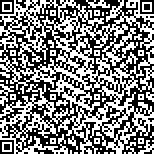| 本文已被:浏览 265次 下载 189次 |

码上扫一扫! |
| 回顾性分析住院患者心电图QT间期延长的科室分布及病因 |
| 张芹1,王竸婧1,赵耀1,曹城玮2,王倩1,程梓萌2,蒙绪良2,黄新苗1*,秦永文1 |
|
|
(1. 海军军医大学(第二军医大学)第一附属医院心血管内科, 上海 200433;
2. 海军军医大学(第二军医大学)基础医学院学员四大队, 上海 200433
*通信作者) |
|
| 摘要: |
| 目的 分析住院患者心电图出现QT间期延长的科室分布及病因。方法 入选2019年1月30日至2022年7月27日于海军军医大学(第二军医大学)第一附属医院接受心电图检查且诊断为长QT间期(校正QT间期≥ 500 ms)的患者61例,收集患者基线资料,分析所在科室及引起QT间期延长的病因。结果 61例QT间期延长住院患者中冠心病、高血压、糖尿病和肿瘤分别占50.8%(31例)、45.9%(28例)、23.0%(14例)和8.2%(5例)。QT间期延长患者的住院科室主要集中在急诊科(45.9%,28例)和心血管内科(31.1%,19例)。QT间期延长的病因主要为药物(44.3%,27例)、冠心病(26.2%,16例)及电解质紊乱(24.6%,15例)。引起QT间期延长的药物中,常见的药物为Ⅲ类抗心律失常药、抗生素(喹诺酮类和大环内酯类)及5-羟色胺受体拮抗剂等。61例QT间期延长住院患者中,有3例(4.9%)发生尖端扭转型室性心动过速,6例(9.8%)住院期间死亡。结论 住院患者中,QT间期延长多见于急诊科和心血管内科,绝大多数为获得性QT间期延长,常见的病因包括药物、冠心病及电解质紊乱等。 |
| 关键词: 心电图 QT间期延长 尖端扭转型室性心动过速 抗心律失常药 |
| DOI:10.16781/j.CN31-2187/R.20220784 |
| 投稿时间:2022-10-11修订日期:2023-09-20 |
| 基金项目:海军军医大学(第二军医大学)本科学员创新实践能力孵化基地项目(2022052). |
|
| Distribution and causes of QT interval prolongation in hospitalized patients: a retrospective analysis |
| ZHANG Qin1,WANG Jingjing1,ZHAO Yao1,CAO Chengwei2,WANG Qian1,CHENG Zimeng2,MENG Xuliang2,HUANG Xinmiao1*,QIN Yongwen1 |
(1. Department of Cardiovasology, The First Affiliated Hospital of Naval Medical University (Second Military Medical University), Shanghai 200433, China;
2. The Fourth Student Team, College of Basic Medical Sciences, Naval Medical University (Second Military Medical University), Shanghai 200433, China
*Corresponding author) |
| Abstract: |
| Objective To analyze the distribution and causes of QT interval prolongation in hospitalized patients. Methods A total of 61 patients with QT interval prolongation (corrected QT interval ≥ 500 ms) diagnosed by electrocardiogram in The First Affiliated Hospital of Naval Medical University (Second Military Medical University) from Jan. 30, 2019 to Jul. 27, 2022 were enrolled. The baseline characteristics of patients were collected, and the departments of the patients and the causes of QT interval prolongation were analyzed. Results Coronary heart disease, hypertension, diabetes mellitus, and tumor accounted for 50.8% (31/61), 45.9% (28/61), 23.0% (14/61), and 8.2% (5/61) of hospitalized patients with QT interval prolongation, respectively. The inpatient departments of patients with QT interval prolongation were mainly Department of Emergency (45.9%, 28/61) and Department of Cardiovasology (31.1%, 19/61). The causes of QT interval prolongation were drugs (44.3%, 27/61), coronary heart disease (26.2%, 16/61), and electrolyte disturbances (24.6%, 15/61). The common drugs that prolonged QT interval were classⅢ antiarrhythmic drugs, antibiotics (macrolides and quinolones), and 5-hydroxytryptamine receptor antagonists. Among the 61 patients, 3 (4.9%) cases had torsade de pointes and 6 (9.8%) died during hospitalization. Conclusion In hospitalized patients, QT interval prolongation is more common in Department of Emergency and Department of Cardiovasology. Most of them are acquired QT interval prolongation, and the common causes are drugs, coronary heart disease, and electrolyte disturbances. |
| Key words: electrocardiogram QT interval prolongation torsade de pointes antiarrhythmics |
.jpg)
.jpg)